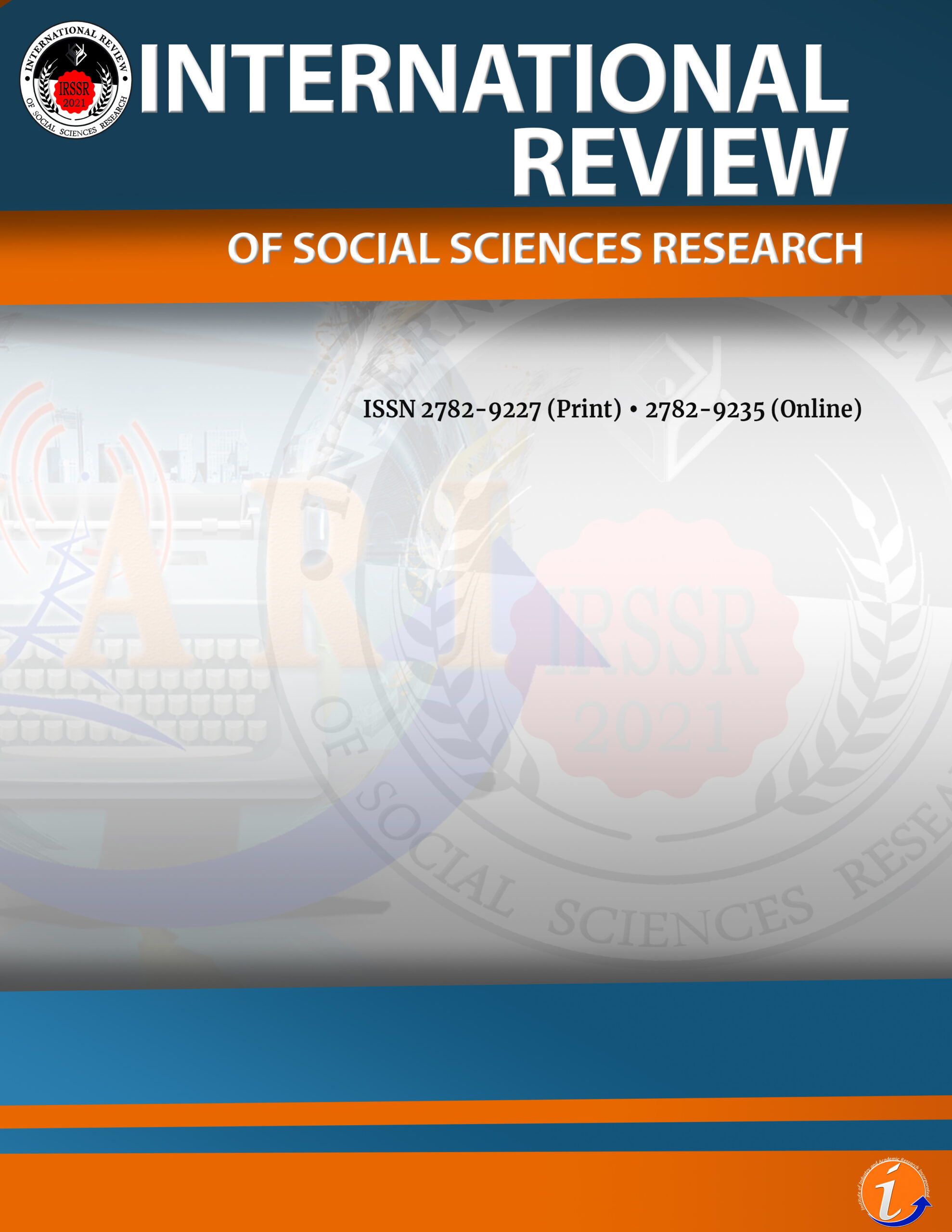Social psychology is a field that studies how social thinking, behavior, and influence shape daily lives. This paper examines various social psychology theories, including social cognition, individual identity, and social influences. The main goal is to gain insight into the human behavior and interactions by exploring social, psychological, and sociological theories. The study used a systematic review based on previous research over three months and analyzed 80 research papers, ultimately using 28 papers that mostly covered the aim of this study. The findings highlighted the importance of racial diversity in shaping contemporary race relations and emphasized the need for cohesive yet diverse communities. The analyses revealed that individuals' tendencies to self-serve inflate their traits' moral value, influencing others' self-perceptions and judgments. Innovative approaches such as agent-based modeling offered new perspectives on social dynamics, while identity emerged as a fluid construct shaped by socio-historical contexts. The ecological perspective provided valuable insights into the adaptive relationship between individuals and their environments. This review illuminates the crucial role of social psychology in understanding the complex interplay of individual behaviors, societal influences, and evolving identities. Throughout the paper, the discussion concerns the connection between theories and research and the application of findings to real-life situations. Hence, social psychology provides valuable insights into individual behavior and the social environment.
behavior, psychology, social psychology, theory
Aida Mehrad. Corresponding author. Professor, Researcher, Social Psychologist, Industrial and Organizational Psychologist, Institute for Study Abroad (IFSA-Butler), Barcelona Spain 08010.
Madison Sternberg. Institute for Study Abroad (IFSA-Butler), Barcelona Spain 08010
Emujin Buyandalai. Institute for Study Abroad (IFSA-Butler), Barcelona Spain 08010
Angelina Pius, Elliana Stanich. Institute for Study Abroad (IFSA-Butler), Barcelona Spain 08010
Hibatullah Shaalan. Institute for Study Abroad (IFSA-Butler), Barcelona Spain 08010
Emma Olson. Institute for Study Abroad (IFSA-Butler), Barcelona Spain 08010
Mackenzie Triscik. Institute for Study Abroad (IFSA-Butler), Barcelona Spain 08010
Amanda Bultema. Institute for Study Abroad (IFSA-Butler), Barcelona Spain 08010
Clare Fritsch. Institute for Study Abroad (IFSA-Butler), Barcelona Spain 08010
Sofia Primo. Institute for Study Abroad (IFSA-Butler), Barcelona Spain 08010
Logan Leve. Institute for Study Abroad (IFSA-Butler), Barcelona Spain 08010
Alyssa Bullock. Institute for Study Abroad (IFSA-Butler), Barcelona Spain 08010
Ellie Taylor. Institute for Study Abroad (IFSA-Butler), Barcelona Spain 08010
Alexa Rico. Institute for Study Abroad (IFSA-Butler), Barcelona Spain 08010
Emily Langston. Institute for Study Abroad (IFSA-Butler), Barcelona Spain 08010
Axelrod, R. (1973). Schema theory: an information processing model of perception and cognition. American Political Science Review, 67(4), 1248–1266. https://doi.org/10.2307/1956546
Burger, J. M. (1999). The foot-in-the-door compliance procedure: A multiple-process analysis and review. Personality and Social Psychology Review, 3(4), 303–325. https://doi.org/10.1207/s15327957pspr0304_2
Carpenter, A., & Greene, K. (2015). Social penetration theory. The international encyclopedia of interpersonal communication, 1-4. https://doi.org/10.1002/9781118540190.wbeic160
Cherry, K. (2022). How social comparison theory influences our views on ourselves. Verywell Mind. www.verywellmind.com/what-is-the-social-comparison-process-2795872
Cherry, K. (2022). An overview of social psychology. Boise State University, Idaho State University
Davlembayeva, D. & Papagiannidis, S. (2024). Social influence theory: a review. In S. Papagiannidis (Ed), TheoryHub Book. https://open.ncl.ac.uk
Festinger, L. (1954). A theory of social comparison processes. Human Relations, 7(2), 117–140. https://doi.org/10.1177/001872675400700202
Frey, B. S., & Jegen, R. (2000). Motivation crowding theory: A survey of empirical evidence. SSRN Electronic Journal. https://doi.org/10.2139/ssrn.203330
Fryling, M. J., Johnston, C., & Hayes, L. J. (2011). Understanding observational learning: An interbehavioral approach. The Analysis of Verbal Behavior, 27(1), 191–203. https://doi.org/10.1007/bf03393102
Harré, R., Moghaddam, F. M., Cairnie, T. P., Rothbart, D., & Sabat, S. R. (2009). Recent advances in positioning theory. Theory & Psychology, 19(1), 5–31. https://doi.org/10.1177/0959354308101417
Hewstone, M., & Stroebe, W. (Eds.). (2021). An introduction to social psychology. John Wiley & Sons.
Hogg, M. A., Terry, D. J., & White, K. M. (1995). A tale of two theories: A critical comparison of identity theory with social identity theory. Social Psychology Quarterly, 58(4), 255. https://doi.org/10.2307/2787127
Jost, J. T. (2020). A theory of system justification. Harvard University Press. https://doi.org/10.2307/j.ctv13qfw6w
Jost, J. T., & Van der Toorn, J. (2012). System justification theory. Handbook of Theories of Social Psychology, 313–343. https://doi.org/10.4135/9781446249222.n42
Kitchen, J. P., Kerr, G., E. Schultz, D., McColl, R., & Pals, H. (2014). The elaboration likelihood model: review, critique and research agenda. European Journal of Marketing, 48(11/12), 2033–2050. https://doi.org/10.1108/ejm-12-2011-0776
Koole, S. L., Schlinkert, C., Maldei, T., & Baumann, N. (2018). Becoming who you are: An integrative review of self‐determination theory and personality systems interactions theory. Journal of Personality, 87(1), 15–36. https://doi.org/10.1111/jopy.12380
LaMorte, W. (2022). The social cognitive theory. Sphweb.bumc.bu. sphweb.bumc.bu/otlt/MPH-Modules/SB/BehavioralChangeTheories/BehavioralChangeTheories5
Lawler, E. J., & Thye, S. R. (n.d.). Social exchange theory of emotions. Handbook of the Sociology of Emotions, 295–320. https://doi.org/10.1007/978-0-387-30715-2_14
Mardon, A., Singh, J., Bilal, H., Schuler, M., Kneppers, A., Tang, M., Bhagentsang, D., JeanMarie, N., Patel, A., Habtemikael, M., Raza, N., George, M. E., & Haq, N. (2021). Symbolic interactionism. Edmonton: Golden Meteorite Press.
Mcleod, S. (2023, June 11). Attribution theory in psychology: Definition & examples. Simple Psychology. https://www.simplypsychology.org/attribution-theory.html.
Mehrad, A., Da Veiga, J., Kasparian, J., Cardoso, M., & Hernandez, I. (2023). Understanding and exploring social psychology in the context of human behavior. Open Science Journal, 8(2). 1-18. DOI: https://doi.org/10.23954/osj.v8i2.3391
Mehrad. A., Cordic, S., Crecelius, G., Procise, W., & Wagner, K. (2024). Various layers in social psychology. Jurnal Psikologi Integratif, 12(1), 1-19. https://doi.org/10.14421/dv9mjp89
Peters, M., & Appel, S. (1996). Positioning theory: Discourse, the subject and the problem of desire. Social Analysis: The International Journal of Social and Cultural Practice, 40, 120–141. http://www.jstor.org/stable/23171700
Raisz, H. M. (2005). A review of: “life-span development (10 ed.).” Educational Gerontology, 31(7), 587–588. https://doi.org/10.1080/03601270500205642
Robak, R. W. (2001). Self-definition in psychotherapy: is it time to revisit self-perception theory? North American Journal of Psychology, 3(3).
Solomon, S. (2017). Terror management theory. The Wiley‐Blackwell Encyclopedia of Social Theory. https://doi.org/10.1002/9781118430873.est0813
Sternberg, R. J. (1986). A triangular theory of love. Psychological Review, 93(2), 119–135. https://doi.org/10.1037//0033-295x.93.2.119
Subramaniam, B. (2014). Ghost stories for Darwin: The science of variation and the politics of diversity. Illinois Scholarship Online. https://doi.org/10.5406/illinois/9780252038655.001.0001
Cite this article:
Mehrad, A., Sternberg, M., Buyandalai, E., Pius, A., Stanich, E., Shaalan, H., Olson, E., Triscik, M., Bultema, A., Fritsch, C., Primo, S., Leve, L., Bullock, A., Taylor, E., Rico, A. & Langston, E. (2024). Theories and approaches of social psychology. International Review of Social Sciences Research, 4(2), 99-118. https://doi.org/10.53378/353066
License:
![]()
This work is licensed under a Creative Commons Attribution (CC BY 4.0) International License.










